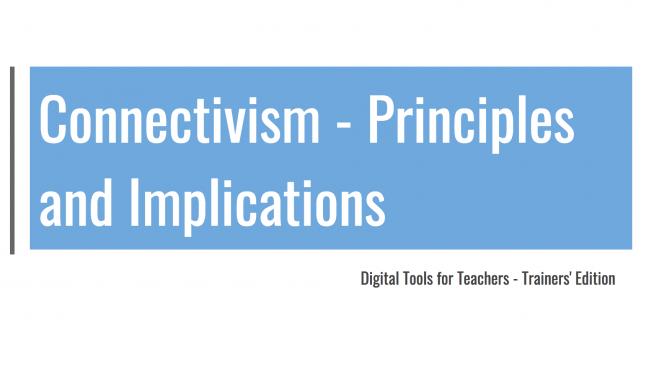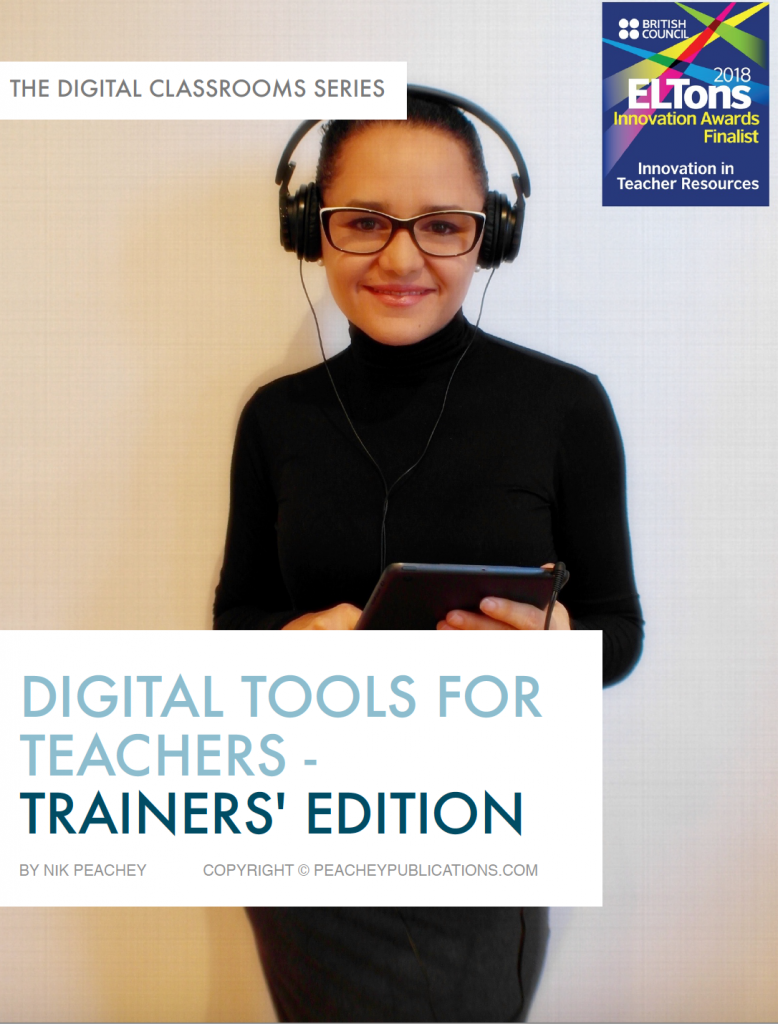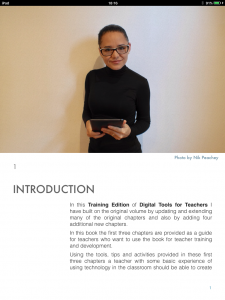 This text has been adapted from the chapter on conceptual models in my e-book – Digital Tools for Teachers – Trainers’ Edition. It’s one of a number of models presented in the chapter that can be used to underpin a sound application of technology within education.
This text has been adapted from the chapter on conceptual models in my e-book – Digital Tools for Teachers – Trainers’ Edition. It’s one of a number of models presented in the chapter that can be used to underpin a sound application of technology within education.
Connectivism is a theory of technology integration that has originated and is unique to the digital world. Connectivism originated as an attempt by Steven Downes and George Siemens to understand and define the ways in which learning naturally occurs in the digitally connected and socially networked world.
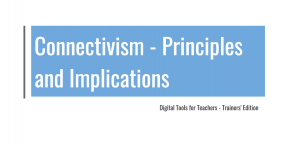
The theory has huge implications for the development of autonomous learning as well as online learning, and has been used and misused to support the construction and implementation of a generation of MOOCs (Massive Open Online Courses) and MOOC platforms.
Connectivist learning is based on the following set of principles:
- Learning and knowledge rests in diversity of opinions.
- Learning is a process of connecting specialised nodes or information sources.
- Learning may reside in non-human appliances.
- Capacity to know more is more critical than what is currently known
- Nurturing and maintaining connections is needed to facilitate continual learning.
- Ability to see connections between fields, ideas, and concepts is a core skill.
- Currency (accurate, up-to-date knowledge) is the intent of all connectivist learning activities.
- Decision-making is itself a learning process. Choosing what to learn and the meaning of incoming information is seen through the lens of a shifting reality. While there is a right answer now, it may be wrong tomorrow due to alterations in the information climate affecting the decision.
When thinking about our use of technology in education we can use these principles as a guide to evaluate the effectiveness of our tasks and activities. We can look at the ways we are encouraging and guiding our students in the use of technology to ensure we are helping to reinforce the understanding and practice of these guiding principles.
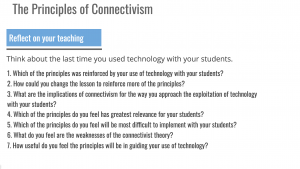 The training presentation below has an introduction to connectivism, some suggestions for how we respond to each of the principles, and some reflection questions for teachers.
The training presentation below has an introduction to connectivism, some suggestions for how we respond to each of the principles, and some reflection questions for teachers.
Training Presentation
Use this link to view the training presentation: Connectivism
This video is also useful in enabling teachers to understand the changing role of the teacher as more students develop a connectivist approach to learning.
Reference
George Siemens – Connectivism: A Learning Theory for the Digital Age, Journal of Instructional Technology: https://www.itdl.org/journal/jan_05/article01.htm
This text has been adapted from the chapter on conceptual models in my e-book – Digital Tools for Teachers – Trainers’ Edition. It’s one of a number of models presented in the chapter that can be used to underpin a sound application of technology within education.
